Wandering through Melbourne’s historic arcades and art-filled laneways might be the ultimate way to see Melbourne on foot.
Driver Lane
Rankins Lane, where balconies overflow with greenery
Hardware Lane - with lots of outdoor dining
Royal Arcade, Australia’s oldest shopping arcade dates to 1870.
Gaunt’s Clock, guarded by two medieval warriors. These two 7-feet giants have been striking the time since 1892. They are modeled on the figures erected in Guildhall, London in 1708 to symbolize the conflict between the ancient Britons and the Trojan invaders. Mythology tells of the giants Gog and Magog (also known as Corineus and Gogmagog) having been captured in battle by the Trojans and made to serve as porters at the gateway of an ancient palace on a site later occupied by the Guildhall.
This 1893 glass canopy marks one of a few entrances into the Block Arcade.
The Block Arcade was built between 1891 and 1893 and is considered one of the late Victorian era’s finest shopping arcades and ranks among Melbourne’s most popular tourist attractions. It is one of Melbourne’s most richly decorated interior spaces, replete with mosaic tiled flooring, glass canopy supported in cast and wrought iron and tall, elaborate timber shop fronts. The arcade takes its name from the practice of “doing the block”: dressing fashionably and promenading around this section of Melbourne.
Some architecture on Elizabeth Street in downtown Melbourne. The red building on the right was built in 1905 and is called the Paton Building,
Built in 1928 is this Spanish Moorish Majorca Building.
Centre Place - originally called Cummings Alley, the street wound around warehouses in the 1890s and the western portion was lined with urinals. Centre Place became one of the ‘first generation of revitalized laneways’ in the 1980s.
Named after an 1851 steam-powered flour mill, today Delgraves Street is a hotspot for street art and alfresco brunch. Delgraves Street was one of the first Melbourne laneways.
Across the street from Flinders Street Station is Federation Square. Abstract buildings flank this block-size plaza, filled with restaurants, museums and arts venues.
I went to two very different aboriginal art exhibits at Federation Square. The first one, in the Koorie Heritage Trust was by artist Josh Muir (1992-2002). The exhibit was called “Forever I Live” and was curated together with Josh’s mother and partner. The artworks in this exhibition reflect Josh’s staunch love of family and community, and draw on a range of themes including cultural identity, the impacts and legacies of colonization, metal health, addiction, personal loss and grief.
Untitled (Sunrise Joy); Untitled (Sunset! Peace) c. 2010
“Federation series: 1901-2001” by Julie Dowling, is a series of history paintings produced in response to the centenary of Federation. The work registers Dowling’s dismay that the Australian constitution did not include First Nations people when the country was declared a nation. The narrative cycle of ten canvases, each symbolizing a particular decade, present a profound and multidimensional First People’s history of the twentieth century.
“Horizonless encyclopedias”. Artists create horizonless maps of Country as a way of expressing their profound connection with the spiritual power of place.
Back down to the Yarra River again and you can see lots of different organizations, many of them schools, getting ready for rowing practice.
















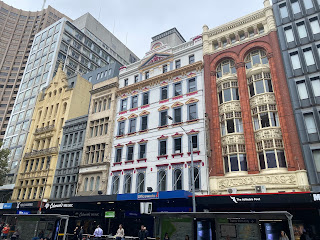
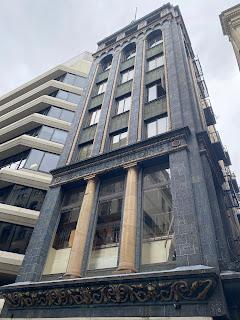
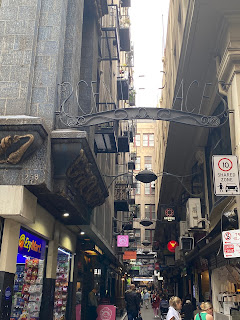


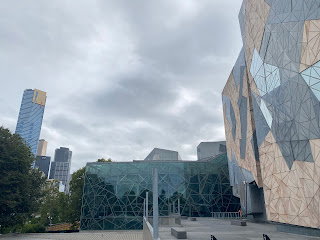

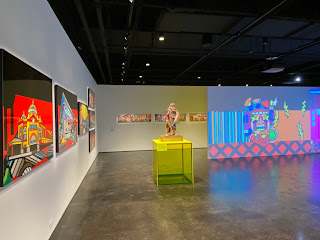









No comments:
Post a Comment